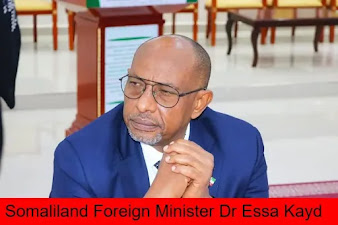THE LEGAL CASE OF SOMALILAND
THE LEGAL CASE
Historical case Somaliland’s claim for independence is based primarily on
historical title – its separate colonial history, a brief period of independence
in 1960, the fact that it voluntarily entered into its unhappy union with
Somalia and the questionable legitimacy of the 1960 Act of Union. Somaliland’s
independence restores the colonial borders of the former British Protectorate of
Somaliland and therefore does not violate the principle of uti possidetis – that
former colonial borders should be maintained upon independence – which is
enshrined in the Consultative Act of the African Union. The separation of fused
states into their former territories has precedents in Africa: Egypt and Syria
were joined as the United Arab Republic (1958 – 1971). Senegal and Mali were
united as the Fédération du Mali (1959 – 1960). Senegal and Gambia were merged
in the Sénégambia Confederation (1982 – 1989). Eritrea officially separated from
Ethiopia in 1993. Britain granted and recognised the independence of Somaliland
in 1960. On the basis that Somaliland voluntarily opted for unification with
Somalia, Somaliland should also be allowed to opt out. The validity of the 1960
Act of Union is highly questionable: In June 1960, representatives from
Somaliland and Somalia each signed different Acts of Union – agreeing to
different terms of unification. The official Act of Union was passed
retrospectively in January 1961 by the new National Assembly. In a referendum on
the new Constitution of the Somali State, held in June 1961, a turnout of less
than 17% in Somaliland, and an overwhelming rejection of the document by those
that voted, demonstrates significant discontent with the union. The unification
of Somalia and Somaliland failed to meet domestic or international legal
standards for treaty formation, and the Act of Union falls short of the Vienna
Convention’s legal requirements for a valid international treaty. Attributes of
statehood The main criteria for statehood remain those set by the 1933
Montevideo Convention, generally considered a norm of customary international
law: “The State as a person of international law should possess the following
qualifications: a permanent population; a defined territory; government; and
capacity to enter into relations with the other states.” Somaliland
unequivocally meets each of these established legal criteria. 1. A permanent
population The Republic of Somaliland has a population of approximately 3.5
million. Its capital Hargeisa has a permanent estimated at 1.1 million. The
nomadic nature of many of Somaliland’s inhabitants, and the consequent flow of
the population in and out of the territory, has no impact on the legal
definition of permanent population. 2. A defined territory The British
protectorate established clearly defined borders for Somaliland by treaties in
the 19th century. These borders were confirmed upon Somaliland’s declaration of
independence in 1960. The contestation of the eastern border does not invalidate
statehood. 3. Effective government Somaliland has a central government which
exercises effective control over the majority of its territory. It has held
internationally recognized free and fair election, most recently in June 2010,
and has effective government institutions including a constitution approved by a
popular vote, a democratically elected President, national parliament, local
governments, and an independent judiciary. 4. Capacity to enter into relations
with other States Despite its unrecognized status, Somaliland has entered into
informal and formal relationships with a number of other states, including the
United Kingdom, Sweden, the United States, Djibouti, Ethiopia and Kenya. It has
also achieved de facto recognition from a number of other nations around the
world


Comments
Post a Comment